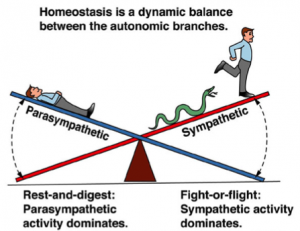
Last week while taking a Restorative class my mind wandered to my first experiences of Restorative yoga.
I had no idea what Restorative yoga was all about. I just knew it used lots of bolsters, blankets and blocks. What could go wrong? Savasana for an hour? Shut the front door.
Well, it’s more than laying in Savasana for an hour. My first few Restorative classes became battle grounds in what I like to call: Combat of The Insistence Mind Chatter.
‘How long are we going to be in this pose for? I swear it’s been twenty minutes all ready.’
‘I wonder if everyone else in this class can hear my stomach growling.’
‘I should have worn a sweater. And socks. I’m cold.’
A friend once called Restorative yoga lazy yoga. I guess to an outsider it does look pretty boring. Laying around supported by props for a prolonged period.
But – our bodies need time to gently drop into the depths of the pose – I have found that the profound stillness of long held shapes enables me to find quietness. Both in my mind, and in my body. It amplifies everything from thoughts running through my mind, to any itch I may feel, to the sound and gentle thumping of my heart.
Restorative yoga is not easy, in fact, sometimes I find it very challenging to reach stillness. But when I do, I find it profoundly peaceful. It is a turning inwards – to both my mind and my subtle body. Where I observe the interplay between the two.
BREAKING DOWN RESTORATIVE YOGA (on a more technical level)
To me, Restorative Yoga refers to gentle postures, (poses, shapes) that use props (sometimes loooooots of them) to stimulate and relax the body. It is a therapeutic practice that combines recovery and healing. These shapes, along with meditation and breathing techniques, can offer healing to our bodies by helping to reduce stress, still the mind, and tap into the parasympathetic nerve.
Sometimes called the rest and digest system, the parasympathetic nerve is responsible for conserving energy, slowing our heart rate, and allowing our nervous system to relax. It counteracts the sympathetic nervous system, the one responsible for the flight-or-fight response.

Restorative Yoga shapes can assist us in reaching rest and relaxation in our bodies by teaching us to fully be aware of ourselves. Both mentally and physically. These shapes invite constructive rest – never at ‘The Edge’. That is, at the end of ones range of motion. Being at ‘The Edge’ of ones range of motion is stressful enough (and potentially harming to the body) even without props!
In Restorative Yoga props replace muscles for support. This encourages the body to achieve mind and body ease, in turn assisting us in releasing tension and helping to support the body by promoting relaxation.